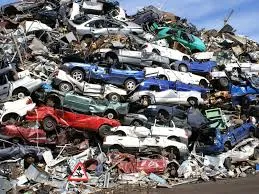
8 月 . 31, 2024 13:05 Back to list
Understanding Mobile Eddy Current Separators
Eddy current separators are innovative devices used in the recycling and waste management industry to efficiently separate non-ferrous metals from other materials. The mobile version of these separators offers significant advantages, especially in terms of flexibility and portability, allowing users to quickly adapt to various site conditions.
What is an Eddy Current Separator?
At its core, an eddy current separator utilizes the principle of electromagnetic induction to segregate non-ferrous metals, such as aluminum and copper, from other materials. The device consists of a conveyor belt that transports the material stream towards a rotor with high-speed rotating magnets. As the materials pass through the rotor's magnetic field, an eddy current is induced in the conductive non-ferrous metals. This generates a magnetic field that repels these metals away from the rest of the material stream, effectively achieving separation.
Mobile Eddy Current Separators The Advantages
One of the foremost benefits of mobile eddy current separators is their portability. They can be easily transported to different job sites, making them ideal for projects where waste streams and materials vary significantly. For instance, waste management companies can move these units from recycling facilities to construction sites or demolition projects, maximizing their efficiency and reducing the need for multiple machines.
Moreover, mobile eddy current separators are designed for easy setup. Often, they require minimal installation time, allowing operations to resume quickly. This capability is particularly beneficial in industries where time is of the essence. By reducing downtime, companies can increase productivity and profitability.

Enhanced Efficiency and Environmental Impact
In addition to their operational flexibility, mobile eddy current separators enhance efficiency in the recycling process. By effectively capturing non-ferrous metals, they ensure that valuable materials are not lost in the waste stream. This contributes significantly to resource conservation and reduces the overall environmental impact of waste disposal. The metals retrieved through this process can be recycled and reintroduced into the market, minimizing the need for new raw material extraction.
Applications Across Industries
The versatility of mobile eddy current separators allows for their use across various industries. In the construction sector, they can be employed to recover metals from mixed demolition debris. In the electronics industry, they are utilized to separate precious metals from electronic waste. Similarly, in the automotive sector, mobile machines can extract non-ferrous components from end-of-life vehicles, facilitating responsible recycling.
Future Outlook
As the global emphasis on sustainability and waste management increases, mobile eddy current separators will likely see broader adoption. Advancements in technology may lead to even more efficient designs, incorporating features such as automated sorting and enhanced magnetic recovery. The potential for integrating these systems with other waste processing technologies can create a more comprehensive and circular waste management approach.
In conclusion, mobile eddy current separators represent a significant advancement in materials recovery technology. Their ability to separate non-ferrous metals with efficiency and flexibility makes them essential tools in modern recycling operations. As we continue to strive for a more sustainable future, these separators will play a crucial role in minimizing waste and maximizing resource recovery.
Latest news
Unveiling the Power of Eddy Current Separator
NewsSep.25,2024
Transform Your Home Recyclin:home metal shredder
NewsSep.25,2024
The Future of Waste Management with Recycling Line Picker
NewsSep.25,2024
The Benefits of a Metal Recycling Plant
NewsSep.25,2024
Revolutionize Material Separation with Onwang Technology
NewsSep.25,2024
Innovative Waste Management: Unveiling the MSW Sorting Plant
NewsSep.25,2024